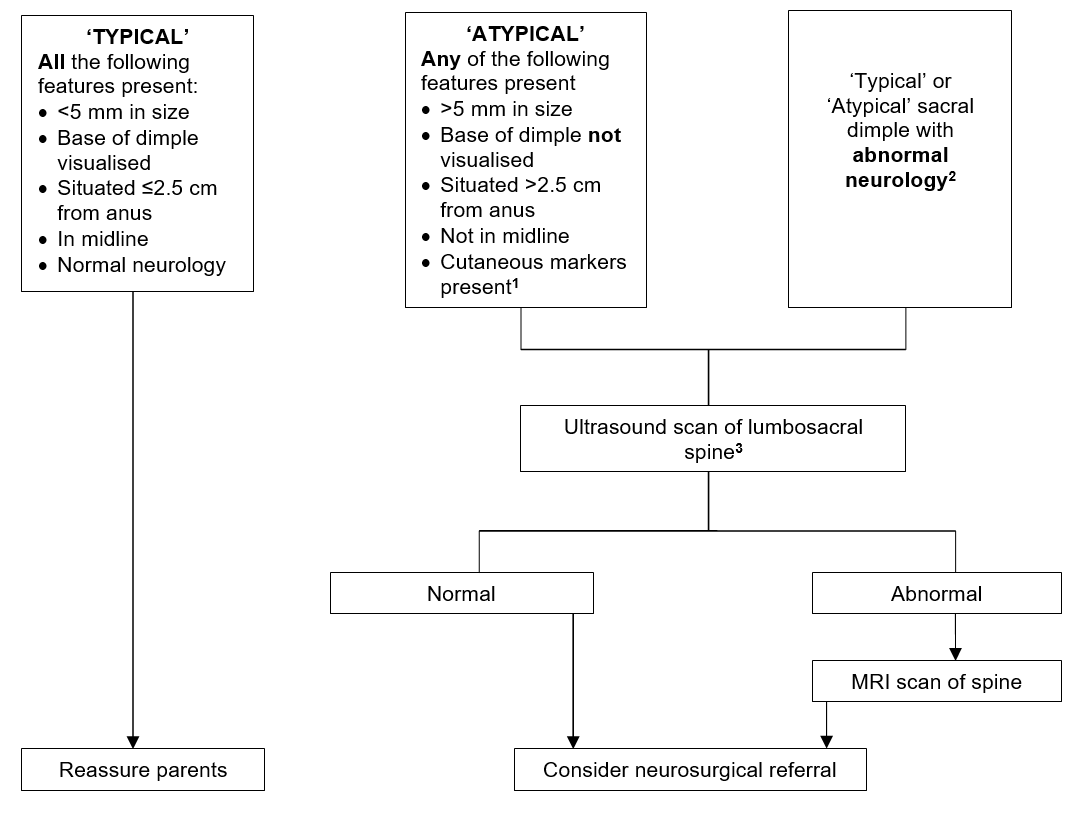Notes
- Cutaneous markers of occult spinal dysraphism e.g. dermal sinus, pigmentation and hairy patch, abnormal skin texture, lipoma, cyst, skin tag, haemangioma and swelling, asymmetric gluteal crease (deviated or duplicated gluteal cleft); cutaneous markers can be seen in isolation or any combination
- Check for neurological signs in lower limbs – leg movements, tone, deep tendon reflexes, presence of patulous anus etc.
- Babies with abnormal neurology may need discussion with neurosurgery team and inpatient investigations. For other cases, evidence in literature suggests delaying ultrasound scan of lumbosacral spine beyond 30 days, but within 3 months for accurate evaluation
Date updated:
